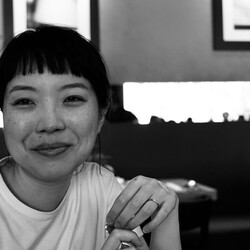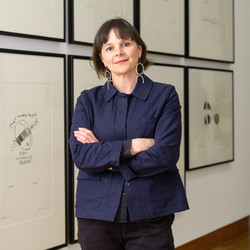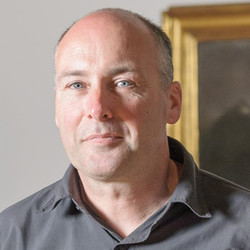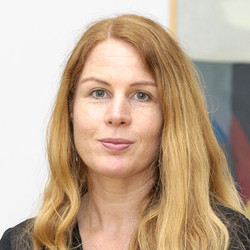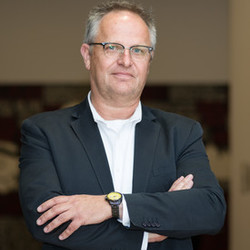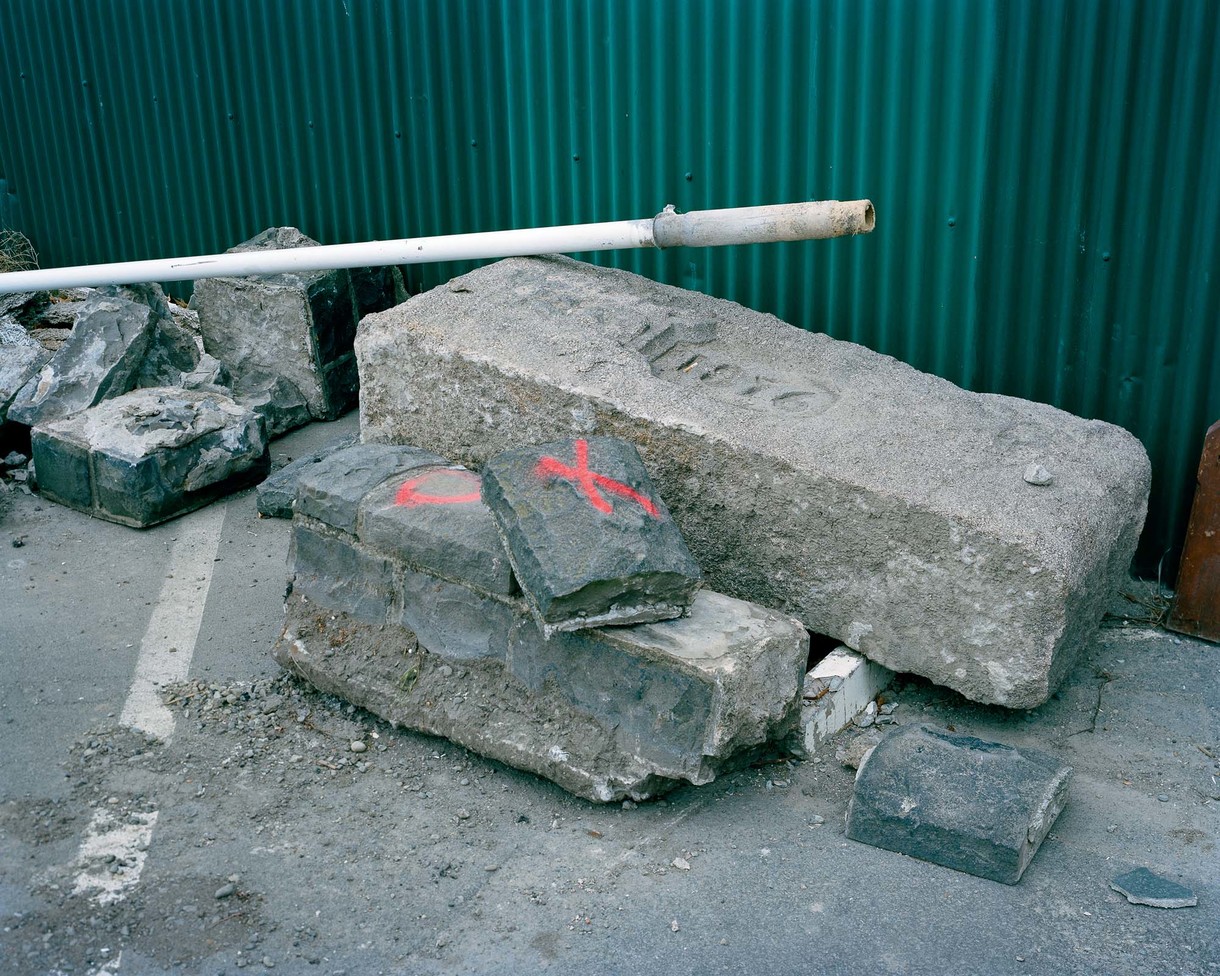Commentary
B.
Bulletin
New Zealand's leading
gallery magazine
Latest Issue
B.21901 Mar 2025
Contributors
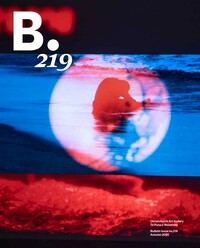
Commentary
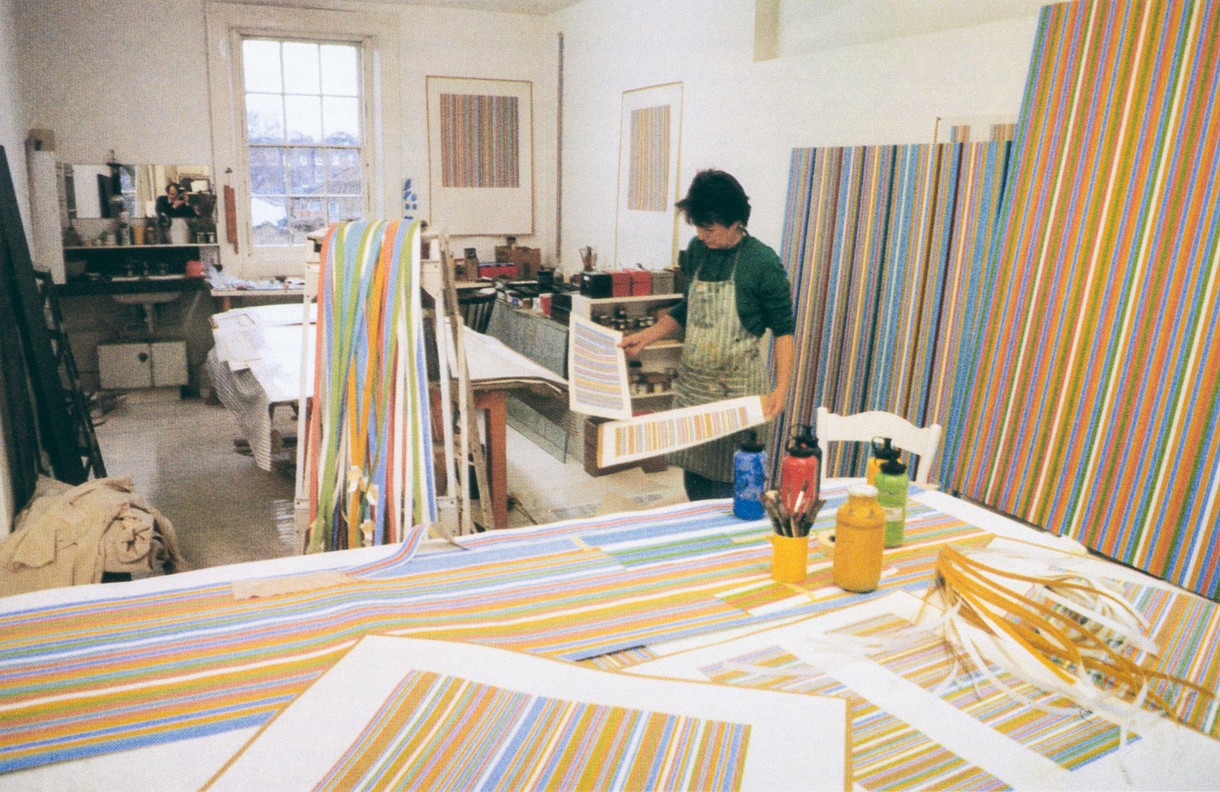
Anticipation and Reflection
This is a time of considerable anticipation at the Gallery: Bridget Riley’s new work for Christchurch is due for completion in late May 2017. A wall painting, it’s the fourth of five significant works chosen to mark the long years of our closure for seismic strengthening following the Canterbury earthquakes of 2010–11. It has been paid for, sight unseen, by a group of wonderful women donors, with further support for costs associated with its installation secured by auction at our Foundation’s 2016 gala dinner.
Commentary
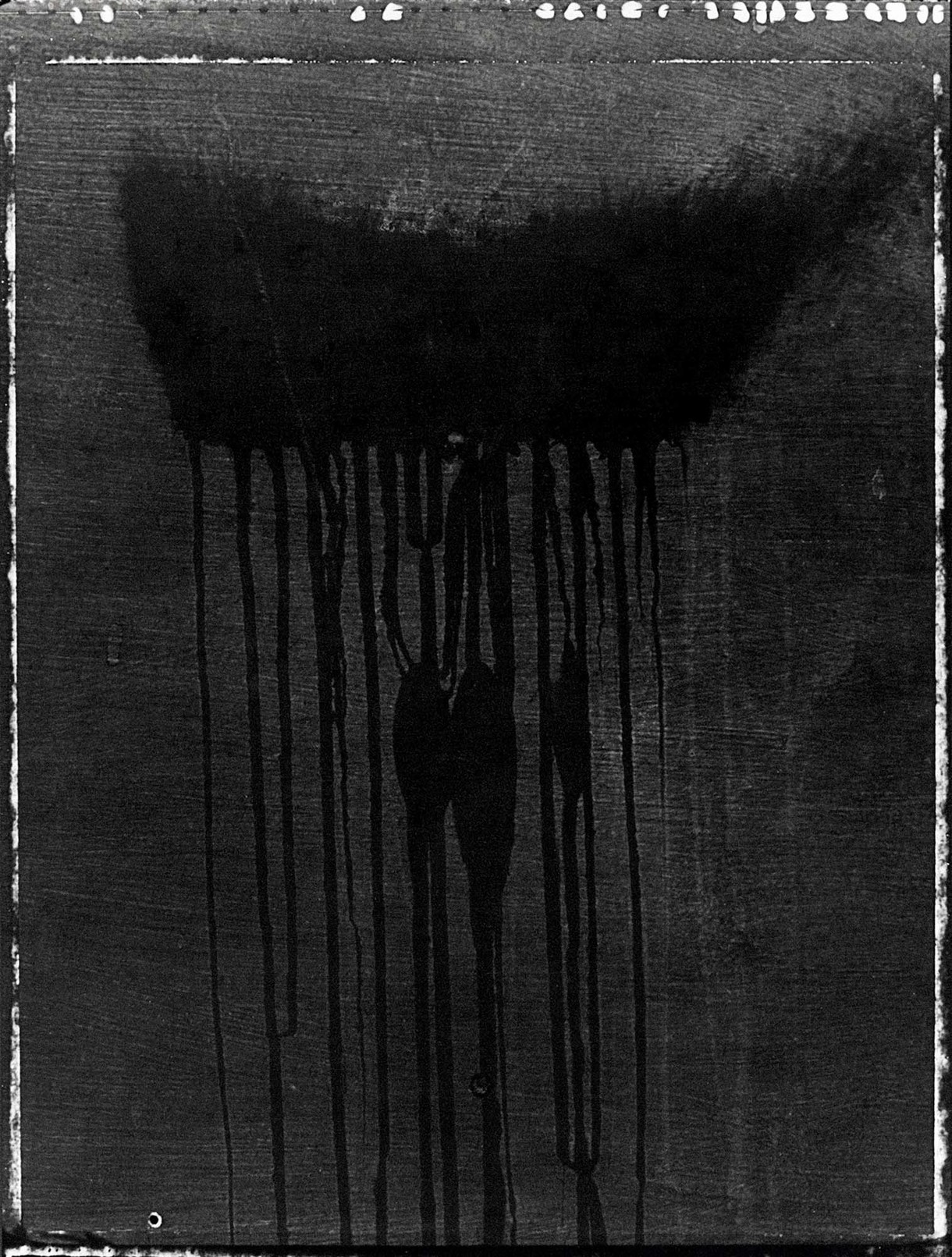
The Camera as a Place of Potential
To Māori, the colour black represents Te Korekore – the realm of potential being, energy, the void, and nothingness. The notion of potential and the presence of women are what I see when I peek at Fiona Pardington’s 1997 work Moko. And I say peek deliberately, because I am quite mindful of this work – it is downright spooky. Moko is a photographic rendering of a seeping water stain upon the blackboard in Pardington’s studio, taken while she was the recipient of the Frances Hodgkins Fellowship in Dunedin in 1997.
Commentary
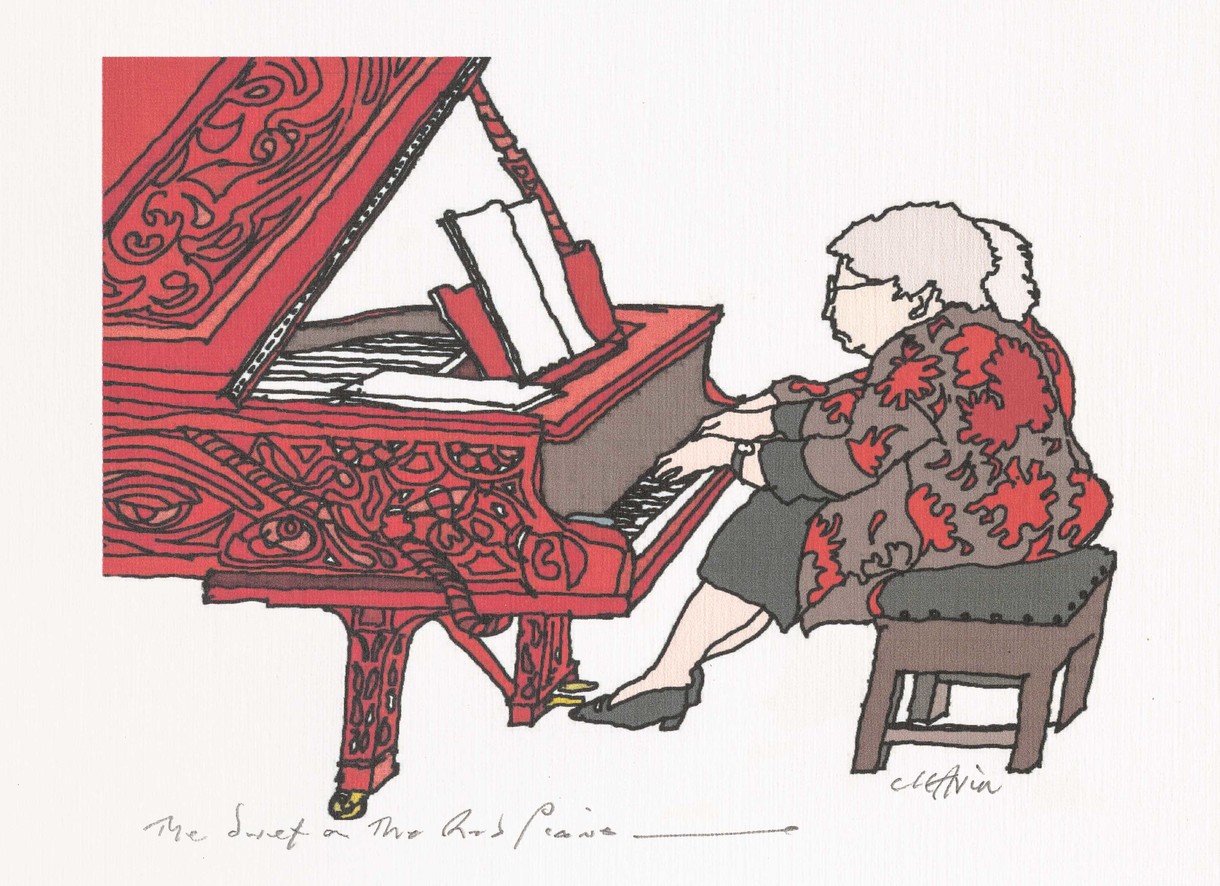
Finding Barry Cleavin
Exploring and documenting the contents of Barry Cleavin’s archive in the Robert and Barbara Stewart Library and Archives was both a novel and an invaluable experience for me.
Commentary
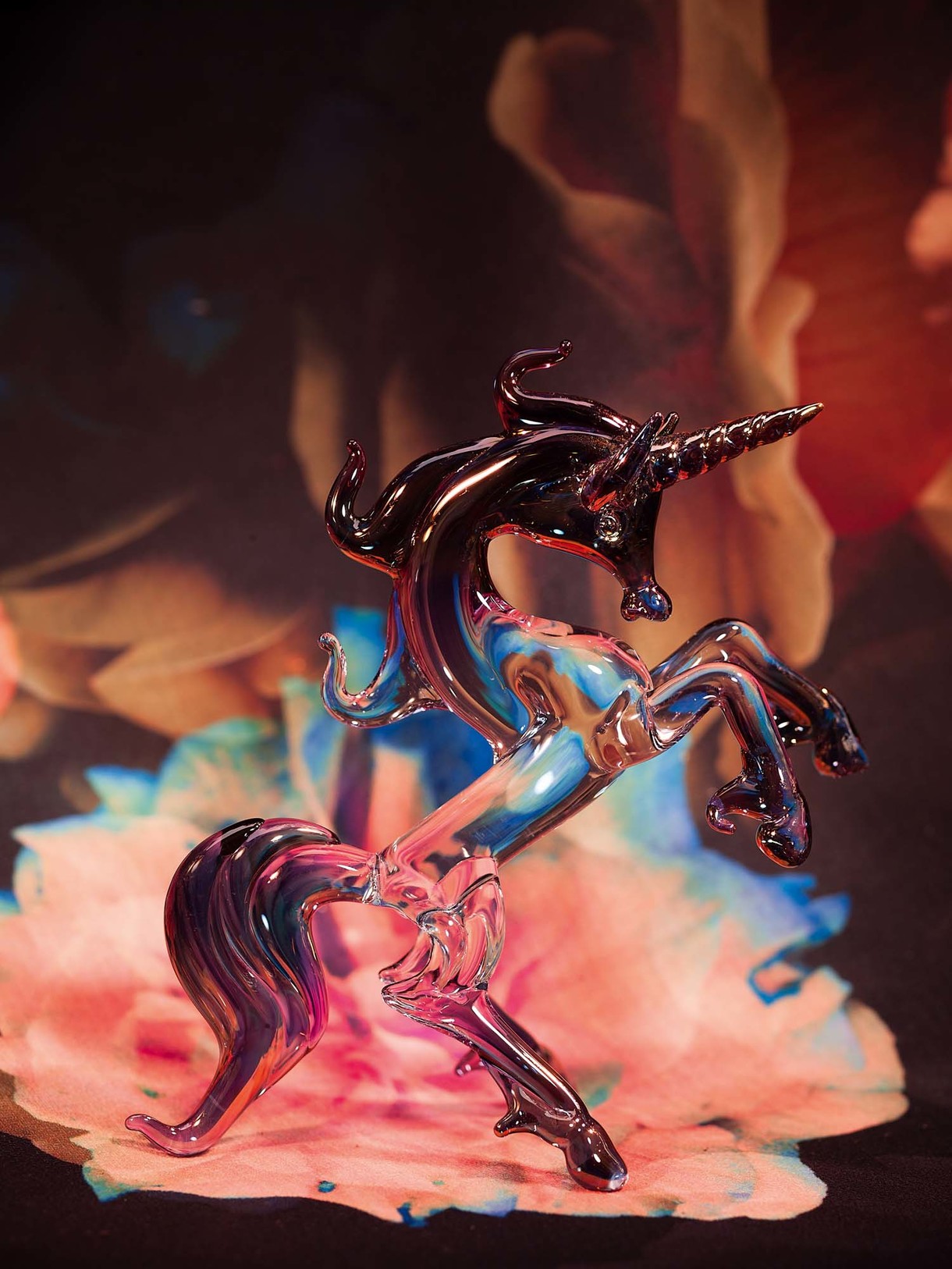
Beyond The Fields We Know
In the canons of received taste, the unicorn figurine doesn’t rank terribly highly beyond kitsch. Sitting in your hand, it’s cutesy, twee, trivial and quaint (though a piece of master-worked Venetian glass from Murano is a pricey and collectable item).
Commentary
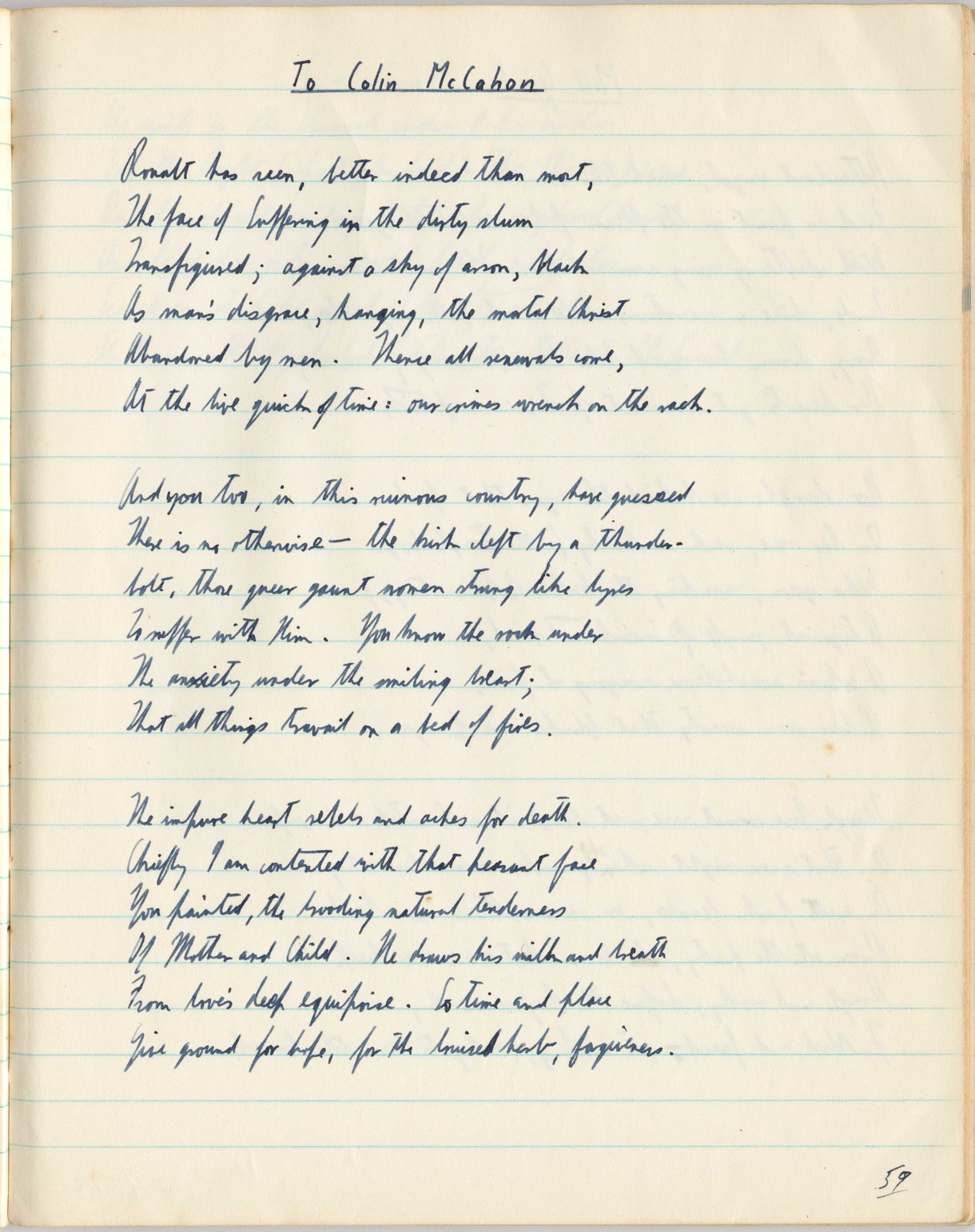
To Colin McCahon
James K. Baxter’s 1952 poem ‘To Colin McCahon’ is an important marker in the long and sometimes tempestuous artistic relationship the two men shared. On an immediate level, the poem is a response to McCahon’s painting There is only one direction (1952), which he presented to Jim and Jacquie Baxter to mark the birth of their daughter Hilary after they had named McCahon her godfather.
Commentary
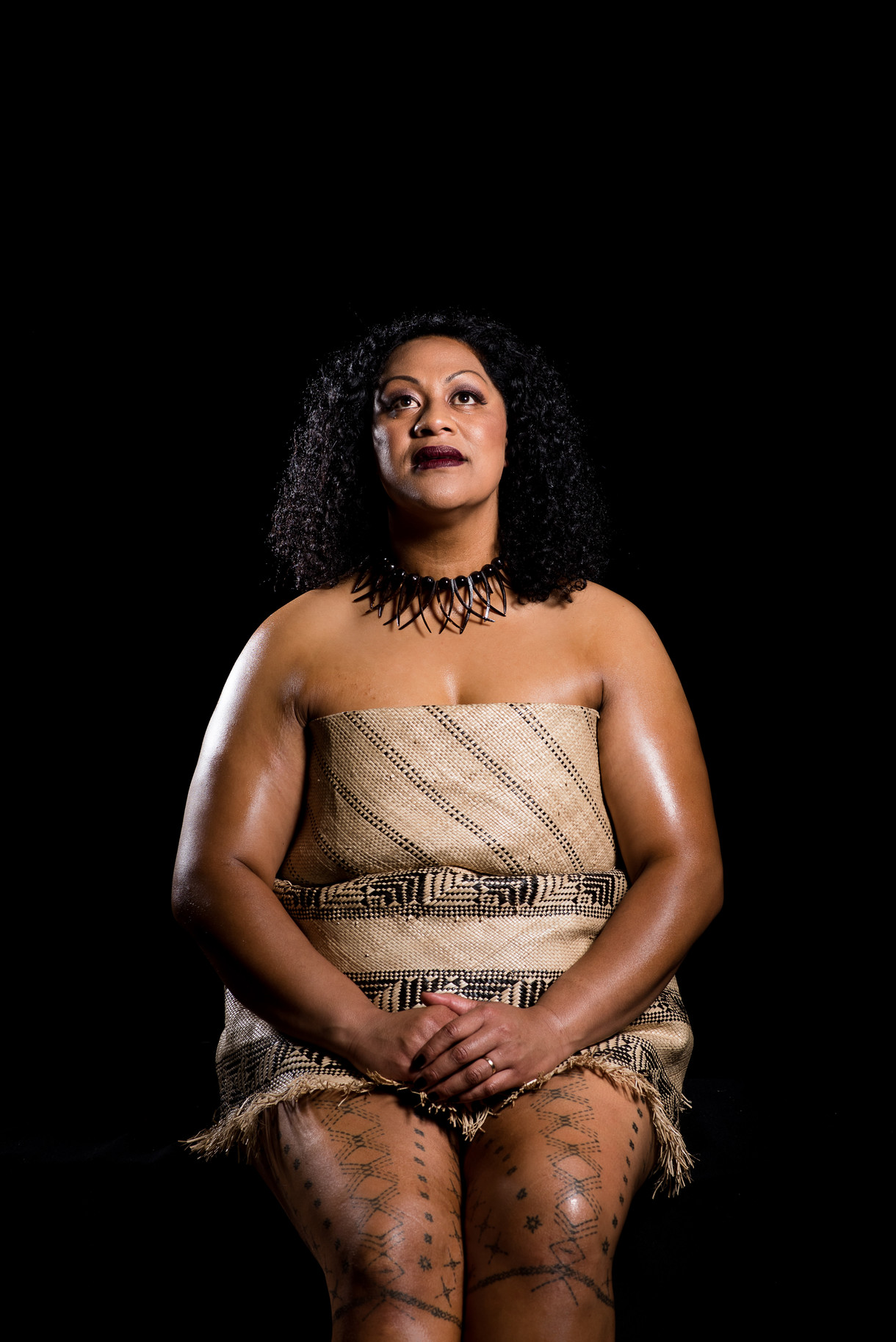
A Perspective on Pacific Art in Christchurch
Pacific art is one of the more internationally successful and innovative sectors of New Zealand’s art industry, but Pacific artists in Ōtautahi have struggled to be a visible part of the city’s cultural landscape. Due to our small population and distance from the Pacific art capital that is Auckland, our artists have often developed in relative isolation, relying on our Pasifika arts community to maintain a sense of cultural vitality, belonging and place within the city.
Commentary
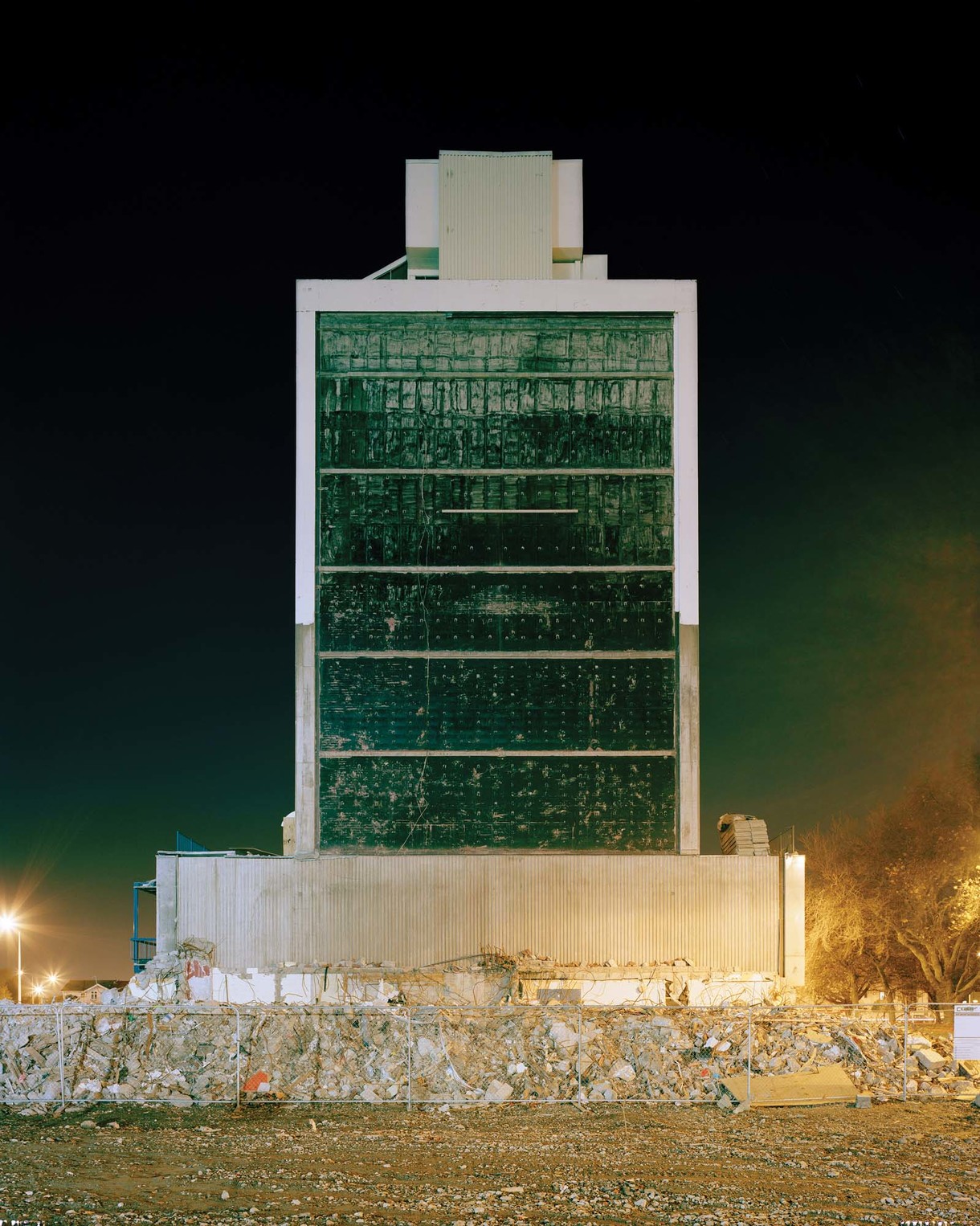
City of Shadows and Stories
If cities are the ground into which we plant stories, the soil of Ōtautahi – later Christchurch – is undergoing a protracted tilling season. Five years is a long unsettlement in human terms; on a geological (or indeed narratological) scale, time moves more gradually. Christchurch exists today as a rich aggregation of narratives, propping up physical edifices of crumbling stone and cardboard.
Commentary
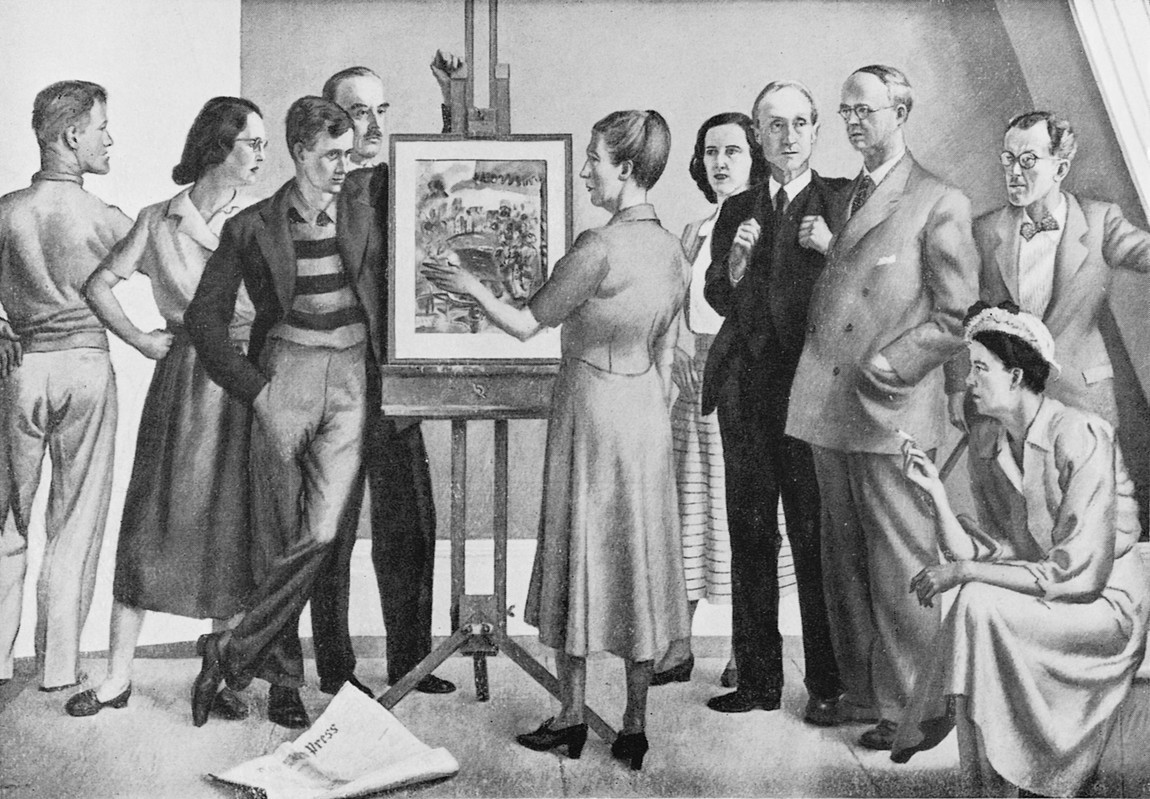
The wisdom of crowds
In recent years, crowdfunding and crowdsourcing have become big news in the arts. By providing a funding model that enables would-be-investors to become involved in the production of new works, they have altered traditional models of patronage. Musicians, designers, dancers and visual artists are inviting the public to finance their projects via the internet. The public are also being asked to provide wealth in the form of cultural capital through crowdsourcing projects. The Gallery has been involved in two online crowdfunding ventures – a project with a public art focus around our 10th birthday celebrations, and the purchase of a major sculpture for the city. But, although these projects have been made possible by the internet, the concept behind the funding model is certainly not new. The rise of online crowdfunding platforms also raises important questions about the role of the state in the funding and generation of artwork, and the democratisation of tastemaking. How are models of supply and demand affected? Does the freedom from more traditional funding models allow greater innovation? Do 'serious' artists even ask for money? It's a big topic, and one that is undoubtedly shaping up in PhD theses around the world already. Bulletin asked a few commentators for their thoughts on the matter.
Commentary
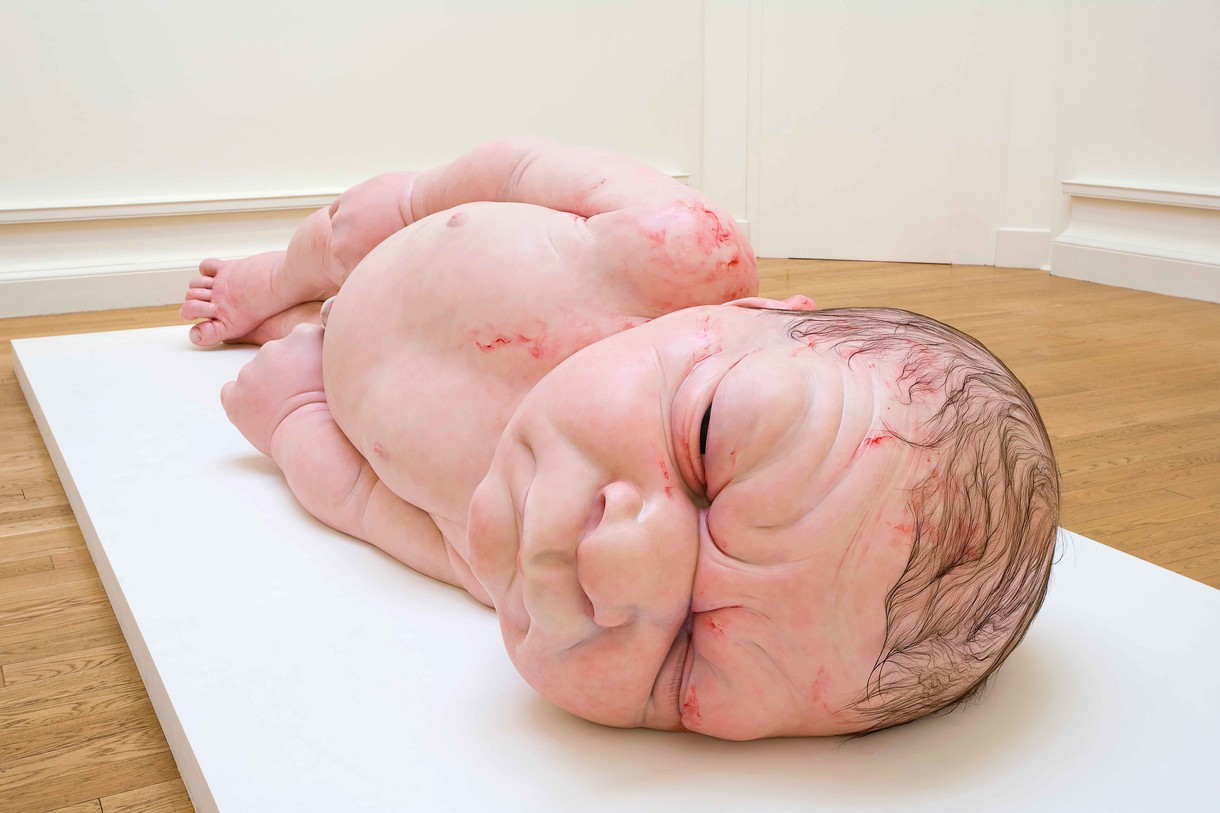
The Edge of Life
When we first saw Ron Mueck’s sculpture of A girl, my companion bent down. She stood back startled. ‘I thought I heard her cry,’ she said. Later she wept over what she had seen. Being moved so deeply was not a response to the shock of the artisanship which created such uncannily life-like figures. Rather it was to do with a different kind of shock – that of recognition of the depiction of an interior emotional world. She felt she might just have had an encounter with the human soul.

